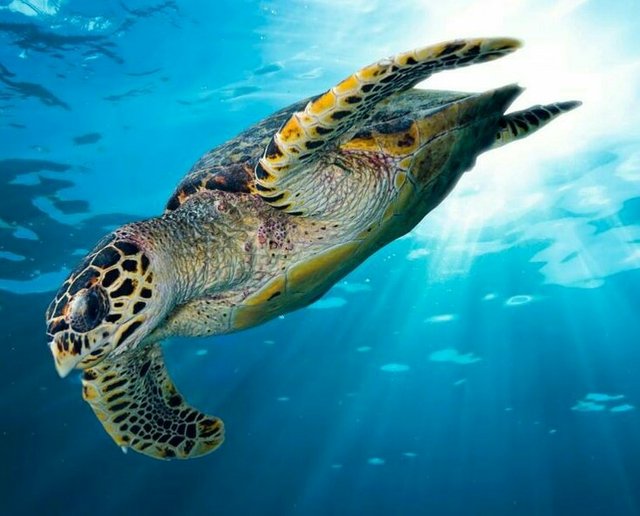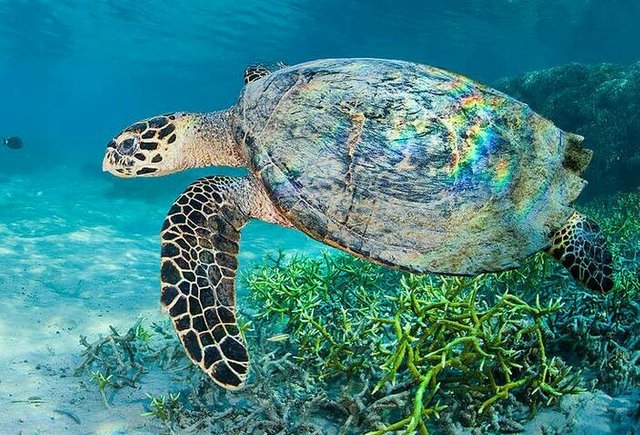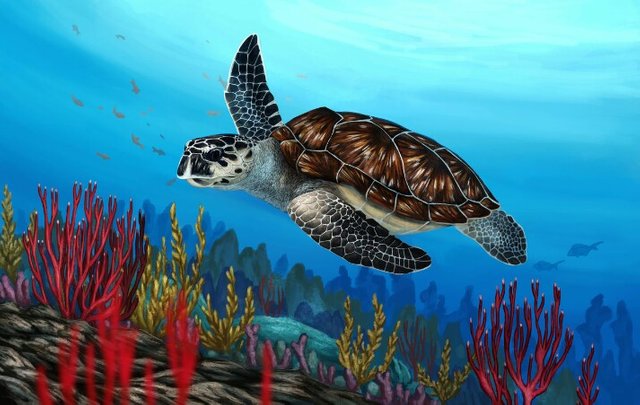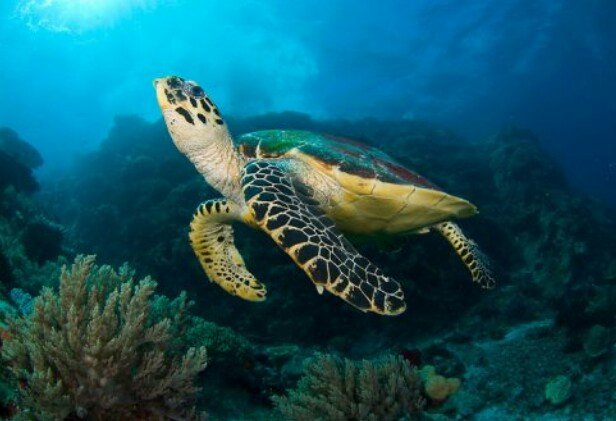Miraculous Information of Hawksbill Sea Turtle
Hello dear steemians here is my new entry on steemit platform with a new post my this post will be about Hawksbill Sea Turtle in this I will show you different information of Hawksbill Sea Turtle so let's see.

The hawksbill sea turtle (Eretmochelys imbricata) is a sea turtle that is widely distributed in the Indian, Atlantic, and Pacific Oceans. It is thought to occur in the shallow lagoons or coral reefs where the turtle spends much of its daytime. The sea turtle rarely goes into the open water; it largely prefers shallow waters. Hawksbill turtles feed on sea sponges.

Hawksbill Sea Turtle Facts
Anatomy
- Like most other marine turtles, hawksbill sea turtles also possess compressed body along with the limbs that seems more like flippers.
- The length of the adult sea turtles grows about 1 m (3 ft) and they weigh up to 80 kg (180 lb).
- The background of the turtle’s shell is all patterned and there are light and dark streaks on it.
- Unlike other species, hawksbill turtle possesses hooked beak. They have sharp claws on each of the arms.The hawksbill’s carapace is 1 m (3 ft) long.They are able to crawl on land

Geographic Range
- Hawksbill sea turtles occur in the Pacific, Indian, and Atlantic oceans. They are likely to make habitats in tropical reefs. imbricata is thought to survive in the warm tropical waters.
- Their range includes Gulf of Mexico, southern Florida, Long Island Sound, Massachusetts, Costa Rica, Puerto Rico, Cuba, Virginia, Japanese Archipelago, northern New Zealand, Great Barrier Reef (Australia), and the Mexican waters
Hawksbill Sea Turtle Habitat
They spend much of their time resting in ledges and caves as they fancy making homes in tropical coral reefs.
Turtles rarely go more than 65 feet (21 meters) deep into the water.
Hawksbills are thought to make homes in a wide variety of habitats such as mangrove swamps, open oceanic waters, and lagoons estuaries.

Feeding Ecology & Diet
Hawksbill sea turtles typically feed on sea sponges as well as algae, fish, barnacles, sea grasses, urchins, and crustaceans. Sea sponges make up 90% of the turtle’s diet. However they are almost entirely omnivores. Hawksbill sea turtles eat comb jellies, sea anemones, jellyfish, and cnidarians. Caribbean turtles typically consume the orders of Spirophorida, Hadromerida, and Astrophorida.Prominent among the sponges are Tethya actinia, Spheciospongia vesparium, Aaptos aaptos, and Chondrilla nucula.Turtles are thought to eat up to 1200 lbs (544 kg) per day.They are migratory animals.

Source
Plagiarism is the copying & pasting of others work without giving credit to the original author or artist. Plagiarized posts are considered spam.
Spam is discouraged by the community, and may result in action from the cheetah bot.
More information and tips on sharing content.
If you believe this comment is in error, please contact us in #disputes on Discord
Hi! I am a robot. I just upvoted you! I found similar content that readers might be interested in:
http://animalstime.com/hawksbill-sea-turtle-facts/